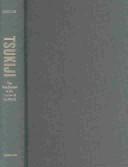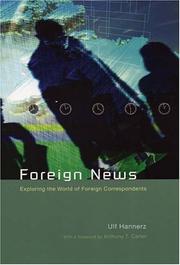| Listing 1 - 8 of 8 |
Sort by
|
Book
ISBN: 4902070243 9784902070248 Year: 2004 Publisher: Tokyo,
Abstract | Keywords | Export | Availability | Bookmark
 Loading...
Loading...Choose an application
- Reference Manager
- EndNote
- RefWorks (Direct export to RefWorks)
Visch, Henk --- Ausstellung --- Tokyo <2004>
Film
Year: 2004 Publisher: [S.l.]: Arte France Développement,
Abstract | Keywords | Export | Availability | Bookmark
 Loading...
Loading...Choose an application
- Reference Manager
- EndNote
- RefWorks (Direct export to RefWorks)
Dans la banlieue de Tokyo, Jun et Koji forment un couple sans histoire. Lorsqu'une fillette est kidnappée et que la police piétine, un inspecteur fait appel à Jun qui possède des dons de voyance. Dès lors tout bascule… Film à petit budget réalisé en 2000 pour la télévision, "Séance" est un thriller horrifique qui s'inscrit dans la veine intimiste de l'auteur.
Book
ISBN: 8884919908 Year: 2004 Publisher: Milano Skira
Abstract | Keywords | Export | Availability | Bookmark
 Loading...
Loading...Choose an application
- Reference Manager
- EndNote
- RefWorks (Direct export to RefWorks)
Environmental planning --- ruimtelijke ordening --- comprehensive plans [reports] --- Architecture --- Tokyo
Book
ISBN: 3907591364 Year: 2004 Publisher: Bern Galerie Bernhard Bischoff
Abstract | Keywords | Export | Availability | Bookmark
 Loading...
Loading...Choose an application
- Reference Manager
- EndNote
- RefWorks (Direct export to RefWorks)
Weiss, Erich --- fotografie --- België --- eenentwintigste eeuw --- Weiss Erich --- straatfotografie --- Parijs --- Tokyo --- 77.071 WEISS
Film
Year: 2004 Publisher: Paris: Pathé vidéo,
Abstract | Keywords | Export | Availability | Bookmark
 Loading...
Loading...Choose an application
- Reference Manager
- EndNote
- RefWorks (Direct export to RefWorks)
Bob Harris, acteur sur le déclin, se rend à Tokyo pour touner un spot publicitaire. Du haut de son hôtel de luxe, il contemple la ville, mais ne voit rien. Il est ailleurs, détaché de tout, incapable de s'intégrer à la réalité qui l'entoure, incapable également de dormir à cause du décalage horaire. Dans ce même établissement, Charlotte, une jeune Américaine, accompagne son mari, photographe de mode. Ce dernier semble s'intéresser davantage à son travail qu'à sa femme. Se sentant délaissée, Charlotte cherche un peu d'attention. Perdus dans un univers inconnu, ils vont ensemble errer dans Tokyo, la nuit.Sofia Coppola filme avec humour et sensibilité l'enfermement dans les grands hôtels de luxe pour Occidentaux, le caractère artificiel et puéril des distractions du Tokyo ultramoderne, et la difficulté de communiquer entre cultures différentes. Pour plus de réalisme, certaines scènes, notamment celles en extérieur, ont été tournées sur le vif, quasiment en caméra cachée. Le propos se concentre sur les décalages : décalages horaires, décalages de générations, décalages entre rêves et réalité, dans les rapports entre ce qu'on veut exprimer et ce qu'on arrive à dire, décalages culturels... La réalisatrice réfute aussi la possibilité pour Bob ou Charlotte d'être touchés par la spiritualité japonaise ou le charme de l'ikebana. Même le voyage à Kyoto est anecdotique. De ce fait, la quasi-impossibilité pour ces deux Occidentaux de parler et de comprendre fait prendre tout son sens au titre du film. Tout finit par apparaître vanité, à l'exception des liens entre les gens. Car c'est un film sur une rencontre, une amitié, un amour même, a priori improbable.
Mégalopole --- Image de la ville --- Perception de l'espace --- Réalisatrice --- Tokyo --- Japon
Book
Abstract | Keywords | Export | Availability | Bookmark
 Loading...
Loading...Choose an application
- Reference Manager
- EndNote
- RefWorks (Direct export to RefWorks)
Art --- Painting --- painting [image-making] --- National Museum of Modern Art [Tokyo] --- Japan

ISBN: 0520220234 9780520220249 0520220242 0520923588 1597349674 9780520923584 9780520220232 9781597349673 Year: 2004 Volume: 11 Publisher: Berkeley University of California Press
Abstract | Keywords | Export | Availability | Bookmark
 Loading...
Loading...Choose an application
- Reference Manager
- EndNote
- RefWorks (Direct export to RefWorks)
Located only blocks from Tokyo's glittering Ginza, Tsukiji-the world's largest marketplace for seafood-is a prominent landmark, well known but little understood by most Tokyoites: a supplier for countless fishmongers and sushi chefs, and a popular and fascinating destination for foreign tourists. Early every morning, the worlds of hi-tech and pre-tech trade noisily converge as tens of thousands of tons of seafood from every ocean of the world quickly change hands in Tsukiji's auctions and in the marketplace's hundreds of tiny stalls. In this absorbing firsthand study, Theodore C. Bestor-who has spent a dozen years doing fieldwork at fish markets and fishing ports in Japan, North America, Korea, and Europe-explains the complex social institutions that organize Tsukiji's auctions and the supply lines leading to and from them and illuminates trends of Japan's economic growth, changes in distribution and consumption, and the increasing globalization of the seafood trade. As he brings to life the sights and sounds of the marketplace, he reveals Tsukiji's rich internal culture, its place in Japanese cuisine, and the mercantile traditions that have shaped the marketplace since the early seventeenth century.
Markets --- Seafood industry --- History --- Tokyo-to Chuo Oroshiuri Shijo --- Tokyo (Japan) --- Social life and customs --- JP / Japan - Japon --- 338.727 --- 381.2 --- J4438 --- J4390.12 --- J4510 --- J4152 --- -Seafood industry --- -Food industry and trade --- Public markets --- Commerce --- Fairs --- Market towns --- Veeteelt en producten van de veeteelt en van de visvangst. --- Plaats waar de handel wordt gedreven. --- Japan: Economy and industry -- agriculture -- fishing industries --- Japan: Economy and industry -- local economic history and geography -- Kantō -- Tōkyō 23 ward area (Edo) --- Japan: Economy and industry -- commerce and trade -- wholesale and distribution --- Japan: Sociology and anthropology -- customs, folklore and culture -- food --- Tokyo --- -History --- Tōkyō-to Chūō Oroshiuri Shijō --- -Tokyo (Japan) --- Markets. --- Seafood industry - Japan - Tokyo - History. --- To?kyo?-to Chu?o? Oroshiuri Shijo?-- History. --- To ̄kyo ̄-to Chu ̄o ̄ Oroshiuri Shijo ̄. --- Tokyo (Japan) - Social life and customs. --- History. --- Social life and customs. --- -Veeteelt en producten van de veeteelt en van de visvangst. --- Food industry and trade --- Veeteelt en producten van de veeteelt en van de visvangst --- Plaats waar de handel wordt gedreven --- Tōkyō-to Chūō Oroshiuri Shijō --- Tokyo (Japan). --- Central Warehouse Market (Tokyo, Japan) --- Tsukiji Central Wholesale Market --- 東京都中央卸売市場 --- 東京都中央卸賣市場 --- Tsukiji Market --- Tsukiji shijō --- Markets - Japan - Tokyo - History --- Seafood industry - Japan - Tokyo - History --- Tokyo (Japan) - Social life and customs --- 17th century. --- asian culture. --- asian history. --- case study. --- east asia. --- economics. --- economy. --- ethnography. --- fieldwork. --- fishmonger. --- foodways. --- globalization. --- international. --- japan. --- japanese culture. --- japanese food. --- marketplace. --- public health. --- seafood trade. --- seafood. --- sushi chef. --- sushi. --- technology. --- tokyo. --- tourism. --- tourist trap. --- tourist. --- tsukiji. --- Marchés --- Produits de la pêche --- Tōkyō (Japon) --- Japon --- Histoire --- Industrie et commerce --- Moeurs et coutumes

ISBN: 0226315746 0226315754 9786613530424 0226922537 1280126566 9780226315744 9780226315751 9780226922539 9781280126567 Year: 2004 Publisher: Chicago University of Chicago press
Abstract | Keywords | Export | Availability | Bookmark
 Loading...
Loading...Choose an application
- Reference Manager
- EndNote
- RefWorks (Direct export to RefWorks)
Foreign News gives us a fascinating, behind-the-scenes look into the practices of the global tribe we call foreign correspondents. Exploring how they work, Ulf Hannerz also compares the ways correspondents and anthropologists report from one part of the world to another. Hannerz draws on extensive interviews with correspondents in cities as diverse as Jerusalem, Tokyo, and Johannesburg. He shows not only how different story lines evolve in different correspondent beats, but also how the correspondents' home country and personal interests influence the stories they write. Reporting can go well beyond coverage of a specific event, using the news instead to reveal deeper insights into a country or a people to link them to long-term trends or structures of global significance. Ultimately, Hannerz argues that both anthropologists and foreign correspondents can learn from each other in their efforts to educate a public about events and peoples far beyond our homelands. The result of nearly a decade's worth of work, Foreign News is a provocative study that will appeal to both general readers and those concerned with globalization.
Journalism --- Foreign news --- Foreign news. --- Flow of news, International --- International flow of news --- International news --- News, Foreign --- News flow, International --- World news --- News agencies --- Press --- Journalism. --- Writing (Authorship) --- Literature --- Publicity --- Fake news --- foreign correspondents, journalism, reporters, anthropologists, jerusalem, tokyo, johannesburg, outreach, reporting, globalization, media, news, career, region, stories, international relations, middle east, africa, cape town, stockholm, associated press, technology, consumption, information, dissemination, culture, newspaper, newsmagazines, radio, networks, cable, new york times, washington post, guardian, telegraph, bias, fieldwork, audience, mediation, nonfiction, history, politics.
| Listing 1 - 8 of 8 |
Sort by
|

 Search
Search Feedback
Feedback About UniCat
About UniCat  Help
Help News
News